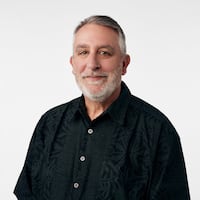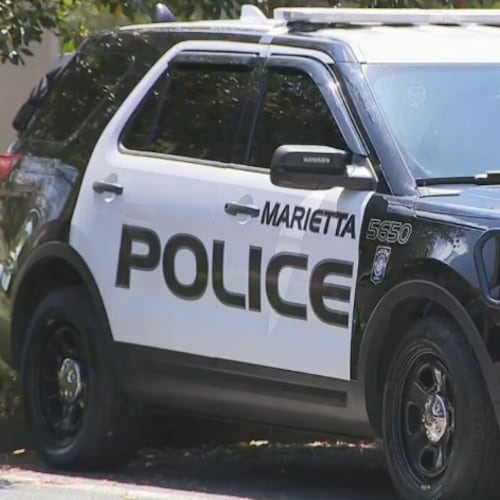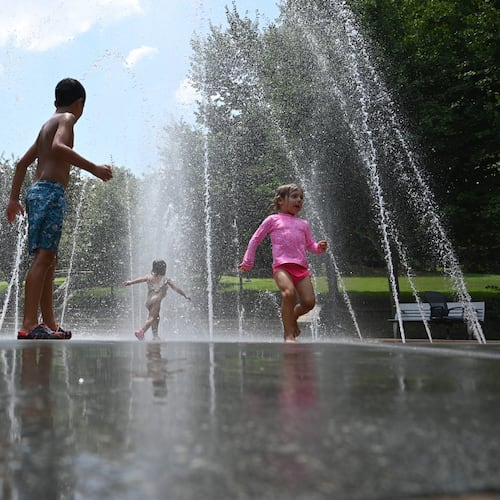Opinions are divided on the accuracy and reliability of cellphone tracking technology like that used by attorneys for Donald Trump to try to prove that Fulton County District Attorney Fani Willis and special prosecutor Nathan Wade are lying about the extent of their romantic relationship.
Some criminal law and technology experts say data from cellphone towers is reasonably precise and commonly accepted by courts to show a person’s movements, while others warn it paints a vague picture at best.
Trump’s attorneys revealed in a court filing Friday that Wade’s cellphone data appears to show he made at least 35 visits to the Hapeville neighborhood where Willis was living before she hired him in November 2021 to lead Fulton County’s election interference prosecution. Both Wade and Willis testified last week that their friendship didn’t develop into a romantic relationship until early 2022, and that Wade rarely visited Willis’ Hapeville apartment and never spent the night.
Former federal prosecutor John Ghose, who has expertise in cybersecurity, technology and privacy, said the data purporting to show Wade was in the vicinity of Willis’ home from late in the evening until early morning is “incredibly damning evidence,” even though it can’t prove that he was with her.
“If I were a prosecutor trying to prove that they perjured themselves in court and they made a false statement, this alone would probably be sufficient to obtain a conviction,” Ghose told The Atlanta Journal-Constitution. “And I think a jury would agree. It’s very strong circumstantial evidence.”
Paul Steffes, a Georgia Tech professor of electrical and computer engineering who has testified about cellphone location data in court cases, said the evidence does not prove that Wade stayed in one place. At best, the data appears to show Wade, who could have been driving around, was within a 9-square-mile area that included Willis’ condo, he said.
“This sounds to me like these folks are not experienced and they don’t understand the limits of either the data or the tool they’re using,” Steffes said of Trump’s team.
Several experts said Friday that the CellHawk technology used by Trump’s investigator to determine where Wade spent his time in 2021 is accurate and has commonly been used by law enforcement agencies for more than a decade.
Former Gwinnett County District Attorney Danny Porter, who routinely used cellphone location technology in major criminal prosecutions, said CellHawk is “very reliable.” John Acevedo, an Emory University professor who specializes in criminal law, said it is “referred to as the gold standard of software.”
“It is one of the most used softwares in the country and is very reputable and accepted,” Acevedo told the AJC. “The analysis (of Wade’s cellphone data) appears to be sound. I think we’re going to have to hear from him as to what he was doing in the area on those dates.”
Wade testified last week that he could have been in the Hapeville area for any number of reasons, including visiting the airport or restaurants.
Emory University professor Ramnath Chellappa, who specializes in information systems and operations management, said a “reasonably reliable” showing of a person’s movements can be provided with cellphone tracking technology, assuming the person is carrying their cellphone.
“Your cellphone is basically a chip on your body,” he said. “You can construct a profile on that individual’s presence and travel path based on that.”
Ghose, Acevedo and Chellappa said the size of the area in which a cellphone can be traced to depends on how many cell towers there are in the vicinity. Urban areas, with more towers, provide greater precision, they said.
“It can be 50 to 500 feet,” Chellappa said. “In rural areas, they can provide all the way up to miles.”
Marietta criminal defense attorney Lawrence Zimmerman, who has used CellHawk in some of his cases, said he found it to be accurate.
“You can’t manipulate it,” Zimmerman said of the cellphone data uploaded to the analytics tool. “The question could be is the cellphone data itself accurate?”
Acevedo said one of the most recent high-profile criminal cases in which cellphone tracking data was used was the 2022 University of Idaho killings in which four students were fatally stabbed in an off-campus residence.
“It’s fairly widely accepted by courts,” Acevedo said of the technology. “In fact, I’d say all courts have now accepted it for the basic information about a rough area of where the owner of the phone is at the time.”
But Karthikeyan Sundaresan, another professor of electrical and computer engineering at Georgia Tech, echoed Steffes’ concerns. He said a phone may “ping” certain towers you’re studying, but it may also ping other nearby towers.
If you’re not examining all of the towers, it can be difficult to locate the phone, he said. Sundaresan reviewed the affidavit and called it “speculation.”
“You can speculate, but it’s not super accurate,” he said.
Keep Reading
The Latest
Featured





